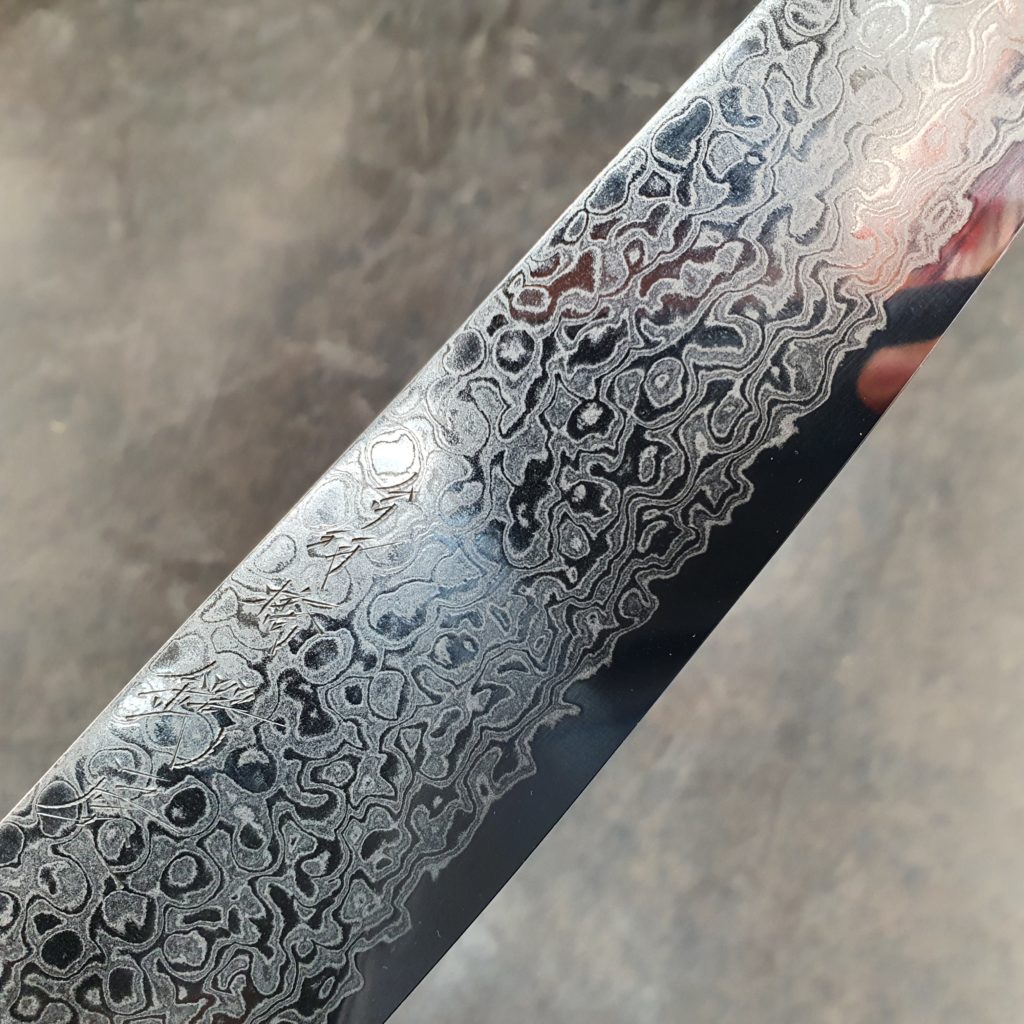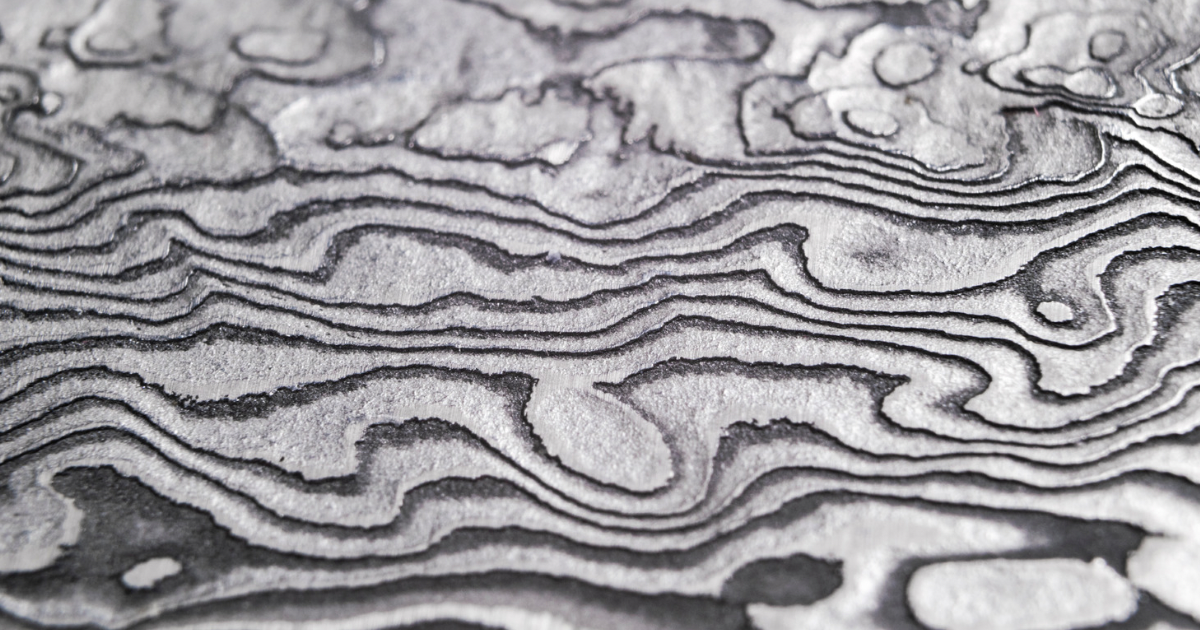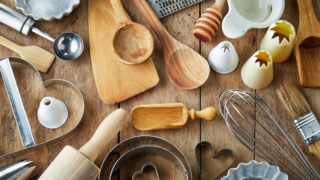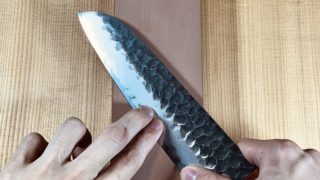What is the “Damascus”?
Damascus steel (Damascus steel) is a steel characterized by its grain pattern and is another name for wootz steel, a crucible steel developed in ancient India. The name Damascus steel comes from the fact that wootz steel was used for swords and other products manufactured in Damascus, Syria. Today, Damascus steel is also used to refer to steel with a pattern created by stacking and forging different metals, but the original Damascus steel pattern is due to the internal crystallization process during steelmaking in crucibles.
Wikipedia

Nowadays, it mainly refers to the design that appears on the surface of a kitchen knife.
The Damascus pattern is made by layering two or more different kinds of steel materials and giving a special treatment to the material to make a unique pattern appear.
It is a very popular kitchen knife because of its beautiful design, and in the last few years, it has gained a strong support especially from overseas customers.
Please note that the basic structure of this knife is the same as a normal 3-piece knife, so there is no difference in the performance of the knife itself as long as the core material of the blade is the same.
Some blogs that introduce recommended kitchen knives may explain Damascus as if it cuts better, but basically, there is only a difference in design.
We are often asked “Is there any difference in performance depending on the number of layers”, but whether it has 35 layers or 101 layers, if the core material is the same, the performance will not change.
Coreless Damascus
This is different from the general Damascus, and it is made by layering two or more kinds of steel materials for the blade (like V-gold No.2 & No.5) to make one metal plate, and then it is processed into the shape of a kitchen knife.
It is basically the same structure as Honyaki, but it is different in that different steel materials are layered on one metal sheet.
One of the characteristics of Coalesse Damascus is that the different steel materials appear alternately on the cutting edge, which gives it a sharpness that cannot be experienced with ordinary knives.
I have seen various research results, but so far I have not seen any papers explaining in detail, so it is not clear how much difference there is in practical use.
Coalesse Damascus is very similar to a normal Damascus cleaver, so the general public often cannot distinguish the difference between them.
The point to distinguish between them is that Coalesse Damascus has a pattern which appears on the whole of the knife, while a normal Damascus knife has no pattern at all at about 5 to 8mm of the edge of the blade.
Characteristics
Advantages
After all, the cool appearance is the reason why Damascus kitchen knives are so popular.
There is a special feeling that you have your own Damascus knife because no two Damascus knives have the same pattern. Moreover, just by using a kitchen knife with a design you like, you can enjoy cooking in your daily life, and if you are working, it will lead to an increase in your motivation.
Especially when you work at the counter, you can see your hand from the customers’ seats, so many cooks buy a Damascus knife with a good design because they are particular about its appearance as a part of their performance.
In my opinion, many cooks take better care of their Damascus knives to avoid scratches because of the pattern on them.
If you take good care of it, you will be able to use it for a long time in a beautiful condition, and you will have more memories with your partner.
Disadvantage
The price tends to be a little higher because it is more time-consuming to produce because several more processes are required to make the pattern appear.
If we only look at the performance, there is no difference from plain kitchen knives, so the cost performance is not so good for those who want practicality.
Also, if the knife gets scratches during use, or if the side of the knife is damaged by a whetstone, it will be very noticeable, so those who are concerned about details may find it difficult to use the knife.
What is the charm?
It is true that there is no difference between Damascus kitchen knives and plain kitchen knives in terms of practicality, but we think that Damascus kitchen knives have raised the stage of kitchen knives from just a tool to a tool that you can also enjoy its appearance.
We think that there should be a different way to enjoy a kitchen knife is for using and also for enjoying its beauty with your eyes.
The more we know about it, the more we understand that it is a very deep world.
Not only Damascus pattern, but we think that we can create different values by paying attention to the appearance and the shape of the kitchen knife itself, while at the same time maintaining the minimum practicality.
In today’s rapidly changing world, if more and more craftsmen take on new challenges while preserving the essence of traditional craftsmanship, more and more people will be interested in knives from a different angle.
I would like to do what I can do to let as many people as possible know the charm of kitchen knives and to make the industry as a whole move in the right direction.



